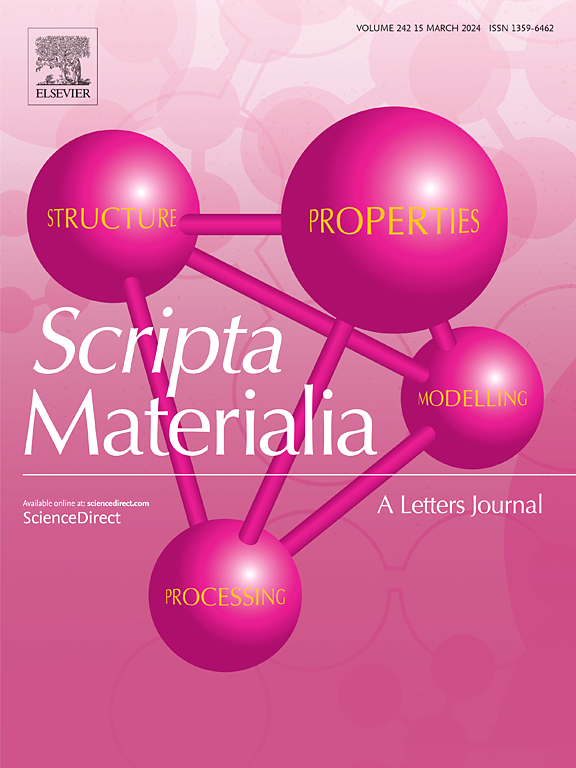Zr3Mn3Sn4Ga:一种新型异卡戈米双层反铁磁体
IF 5.6
2区 材料科学
Q2 MATERIALS SCIENCE, MULTIDISCIPLINARY
引用次数: 0
摘要
我们报道了单晶Zr3Mn3Sn4Ga的磁性和电输运性质,具有两种不同的kagome晶格:非磁性呼吸Zr3Sn4晶格和磁性完整Mn3Ga晶格。在TN = 87 K时,材料发生了反铁磁相变,中子衍射证实了K =(1/3,1/3,0)的相应有序。输运测量显示出金属行为,TN附近的电阻率异常,在2k下9 T下的12%磁阻偏离常规的二阶幂律,以及TN附近的负磁阻和非线性霍尔斜率变化,表明强磁电子耦合。共振光发射光谱识别出zr4d和Mn 3d轨道是价带的主要贡献者,将材料独特的电子特性与其kagome层联系起来。Zr3Mn3Sn4Ga利用磁性和非磁性kagome层共存及其可调谐电子结构,为研究异质kagome体系中磁性和拓扑电子带之间的相互作用提供了一个有价值的平台。本文章由计算机程序翻译,如有差异,请以英文原文为准。

Zr3Mn3Sn4Ga: A new hetero-kagome bilayer antiferromagnet
We report the magnetic and electrical transport properties of single-crystalline Zr3Mn3Sn4Ga, featuring two distinct kagome lattices: a non-magnetic breathing Zr3Sn4 lattice and a magnetic intact Mn3Ga lattice. The material undergoes an antiferromagnetic phase transition at TN = 87 K, with neutron diffraction confirming commensurate ordering characterized by k = (1/3,1/3,0). Transport measurements show metallic behavior, a resistivity anomaly near TN, and 12 % magnetoresistance at 2 K under 9 T Deviations from the conventional second-order power law, along with negative magnetoresistance and nonlinear Hall slope variations near TN, suggest strong magneto-electronic coupling. Resonant photoemission spectroscopy identifies Zr 4d and Mn 3d orbitals as dominant contributors to the valence band, linking the material's unique electronic properties to its kagome layers. Zr3Mn3Sn4Ga offers a valuable platform to study interactions between magnetism and topological electronic bands in hetero-kagome systems using the co-existence of magnetic and non-magnetic kagome layers and its tunable electronic structure.
求助全文
通过发布文献求助,成功后即可免费获取论文全文。
去求助
来源期刊

Scripta Materialia
工程技术-材料科学:综合
CiteScore
11.40
自引率
5.00%
发文量
581
审稿时长
34 days
期刊介绍:
Scripta Materialia is a LETTERS journal of Acta Materialia, providing a forum for the rapid publication of short communications on the relationship between the structure and the properties of inorganic materials. The emphasis is on originality rather than incremental research. Short reports on the development of materials with novel or substantially improved properties are also welcomed. Emphasis is on either the functional or mechanical behavior of metals, ceramics and semiconductors at all length scales.
 求助内容:
求助内容: 应助结果提醒方式:
应助结果提醒方式:


